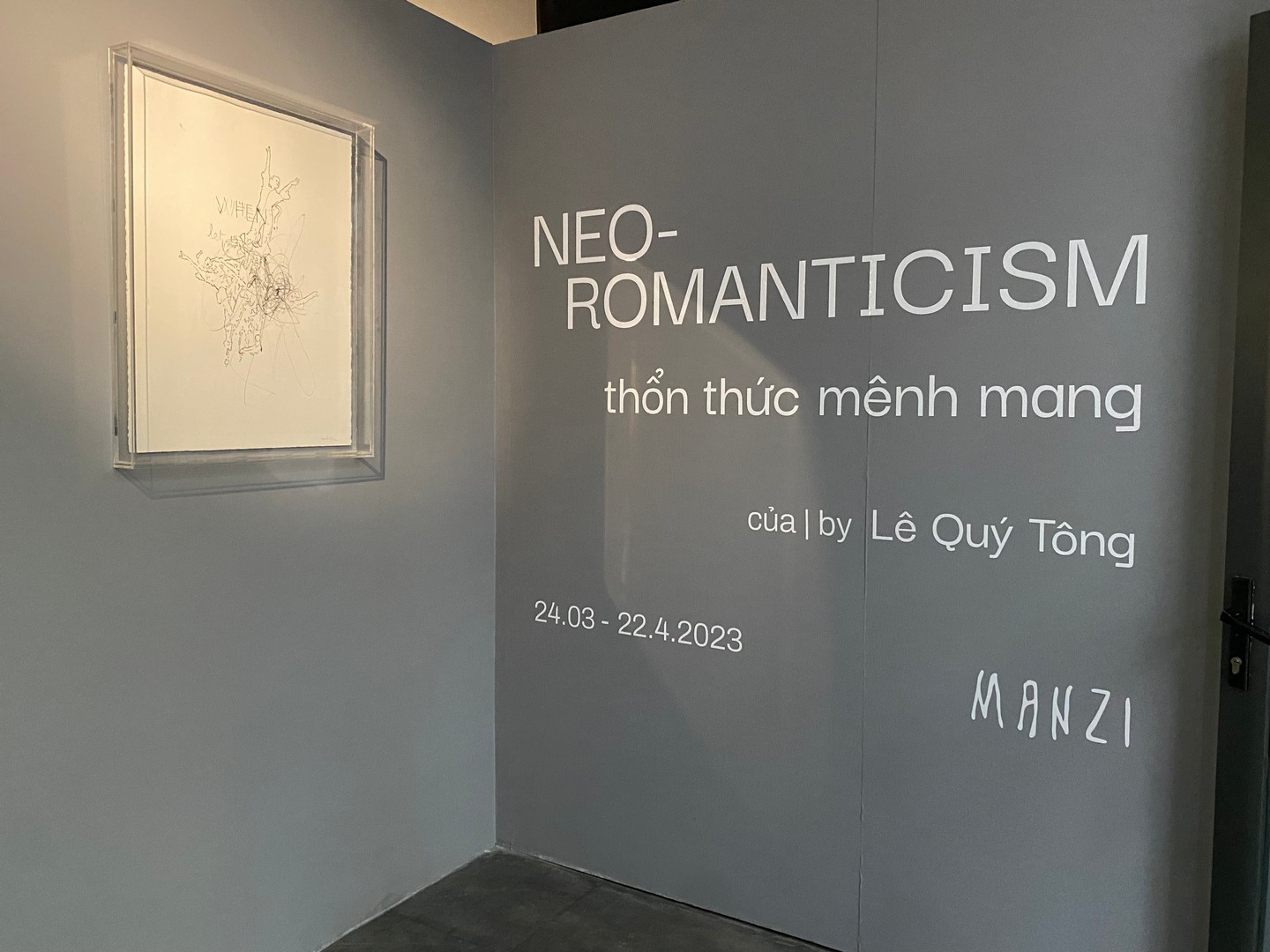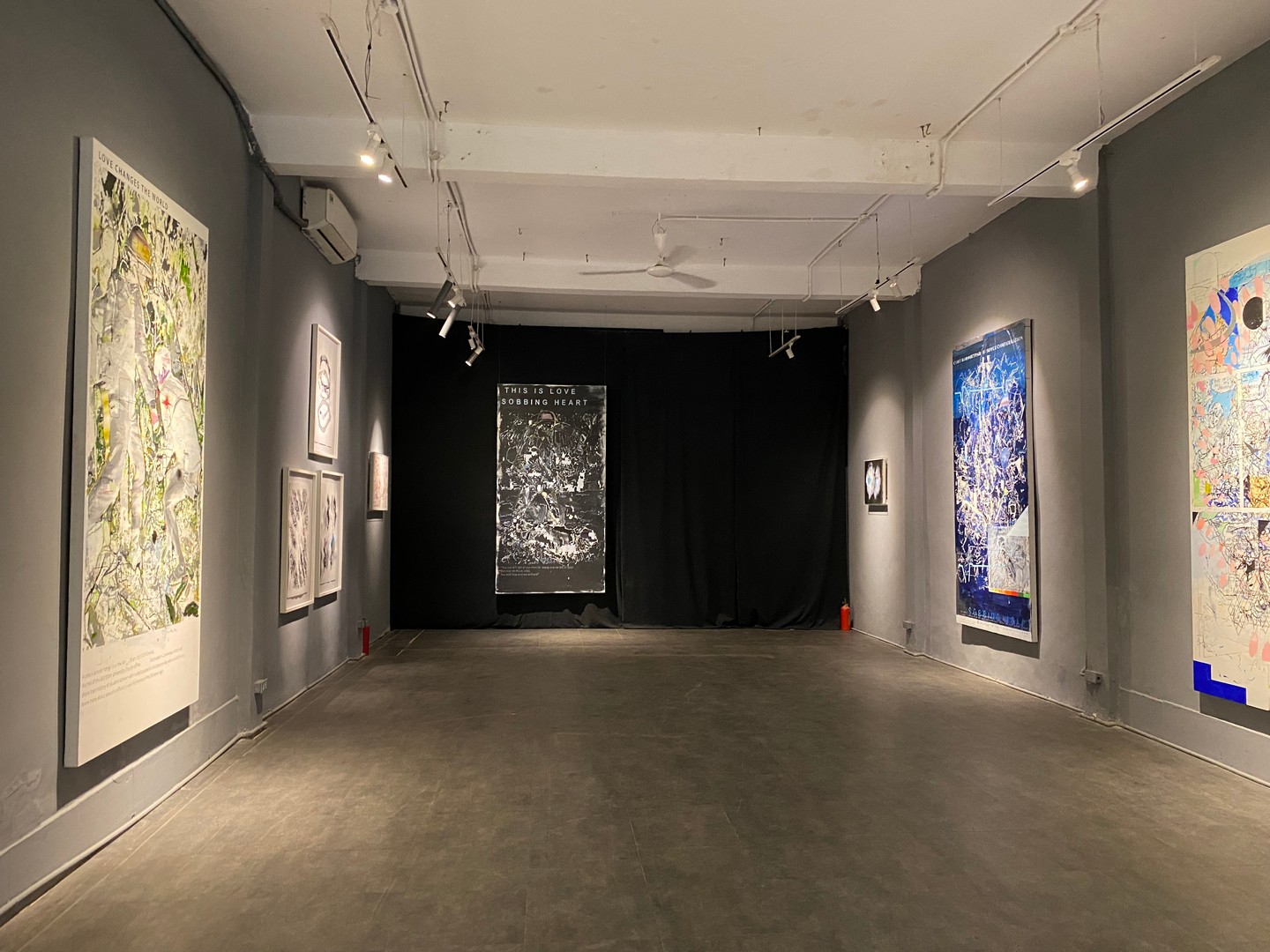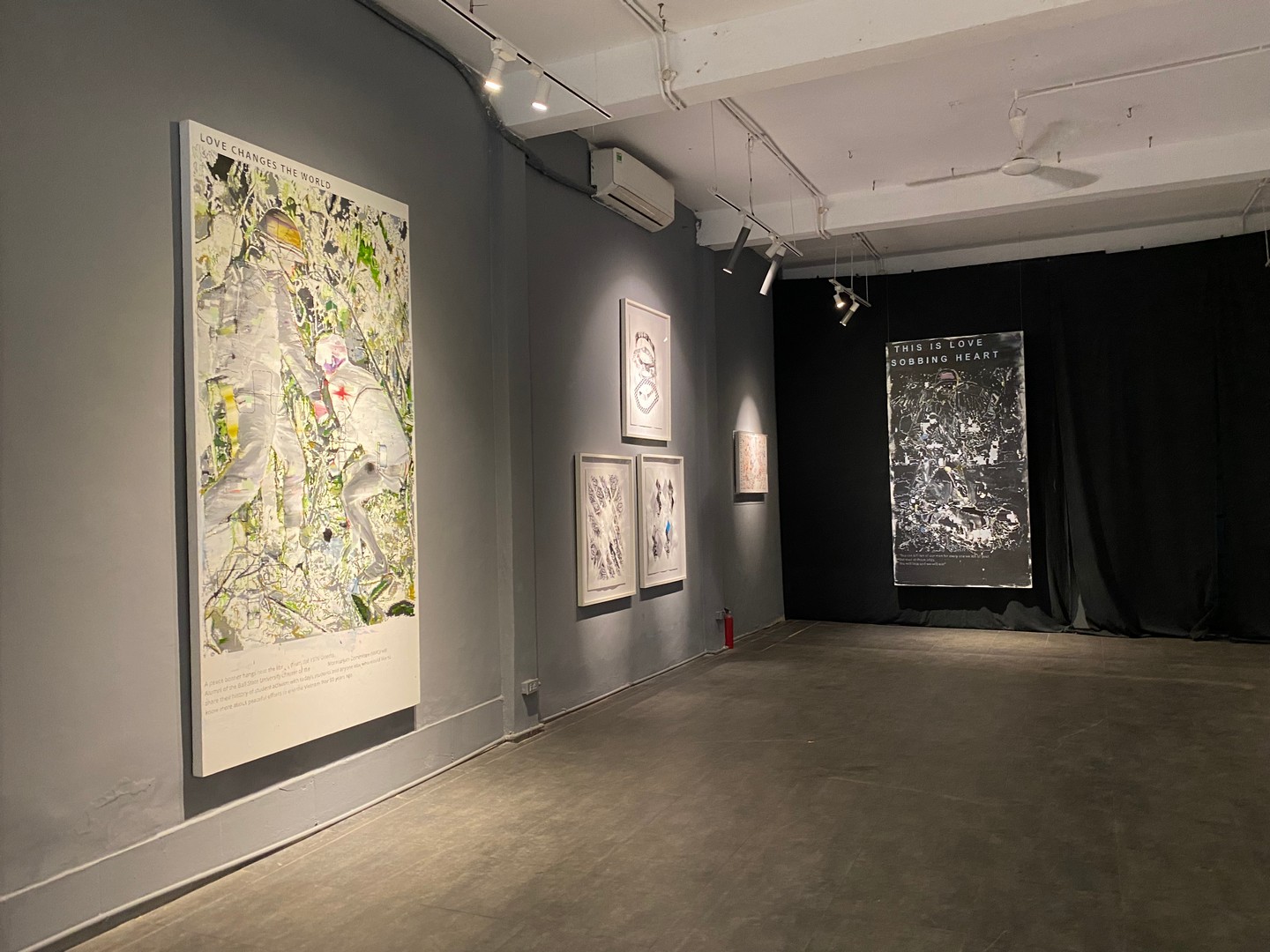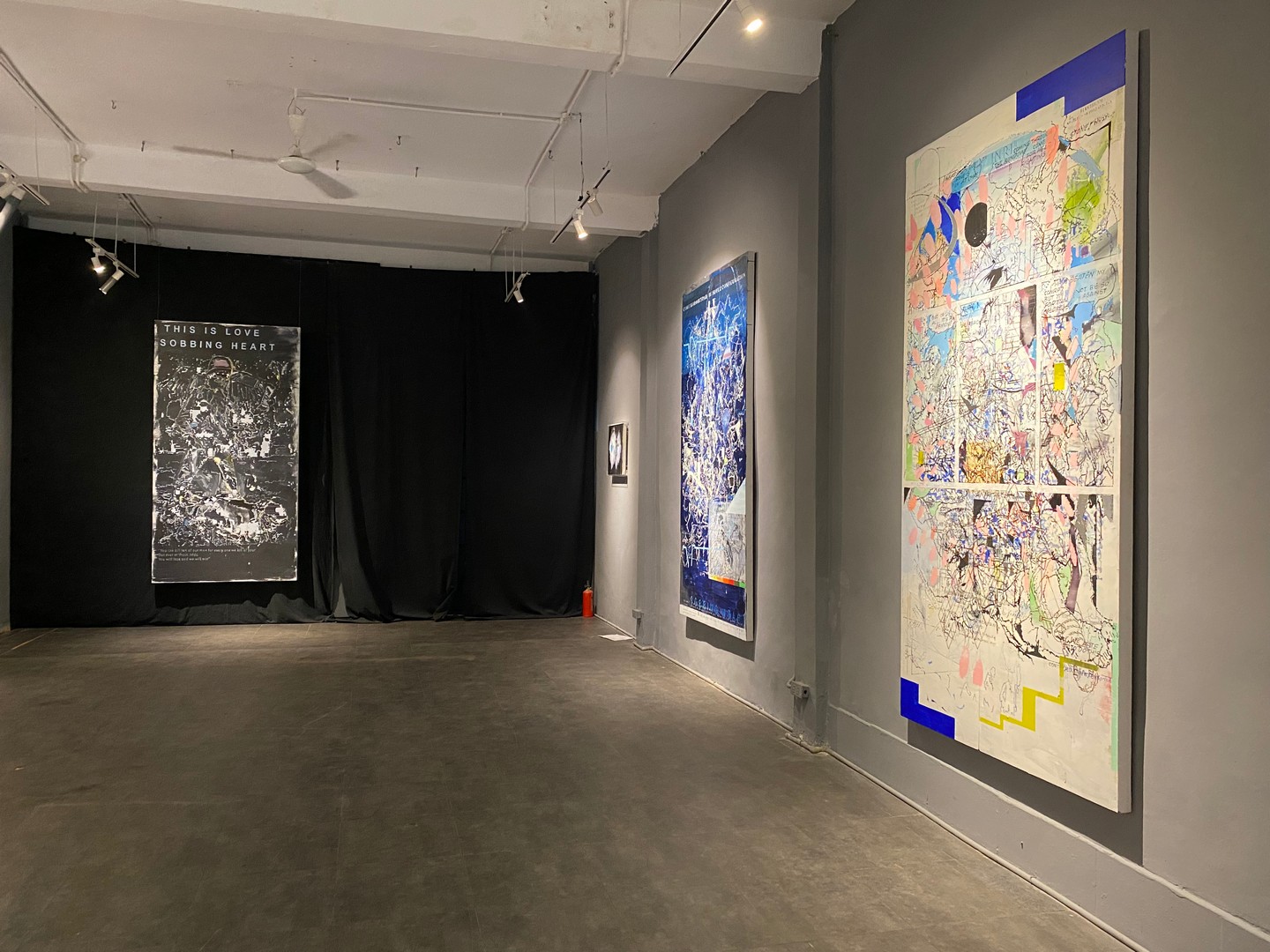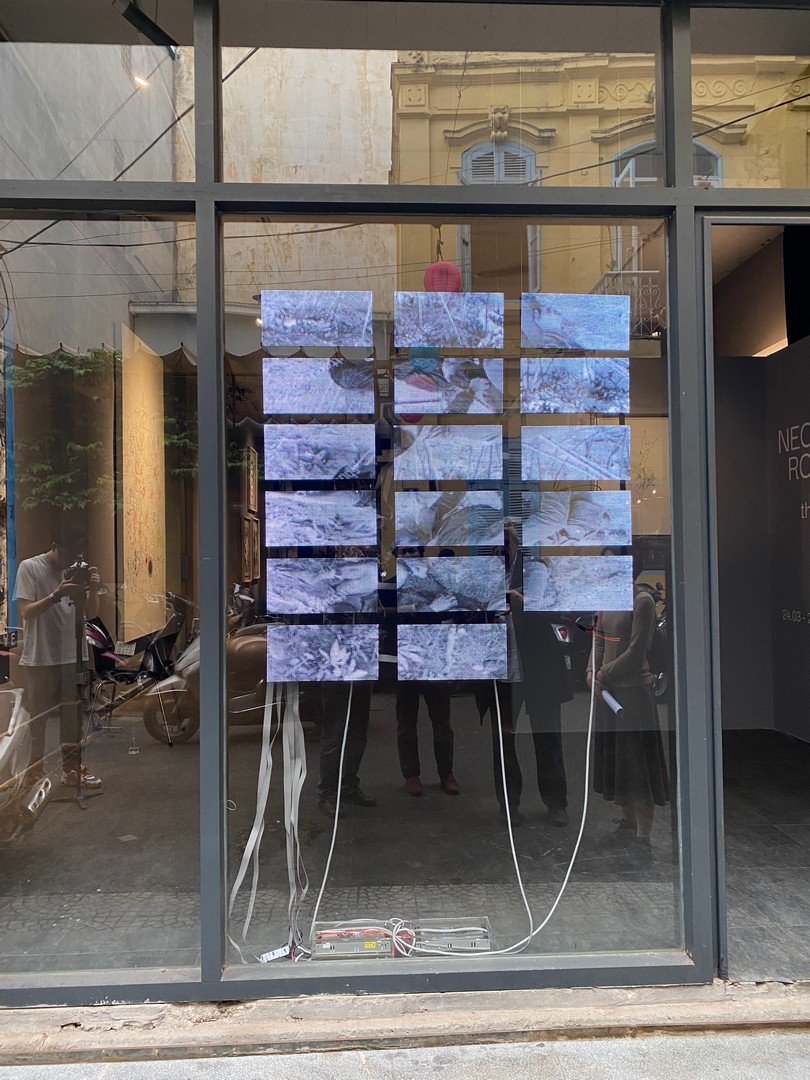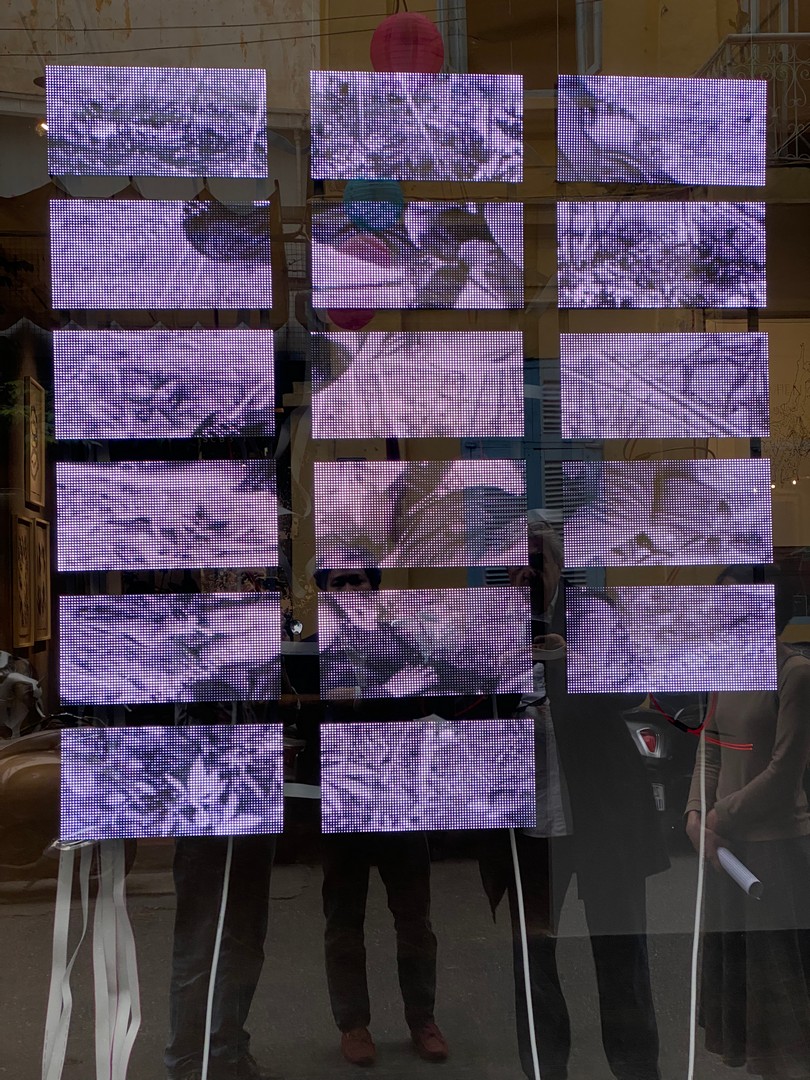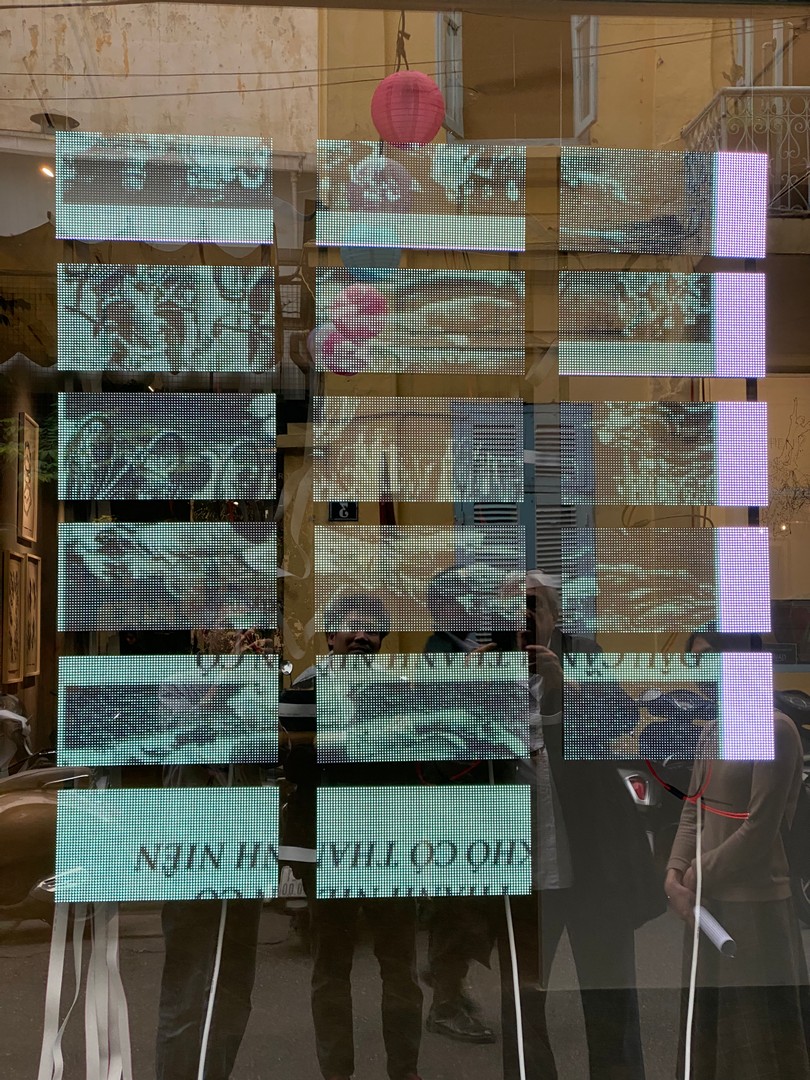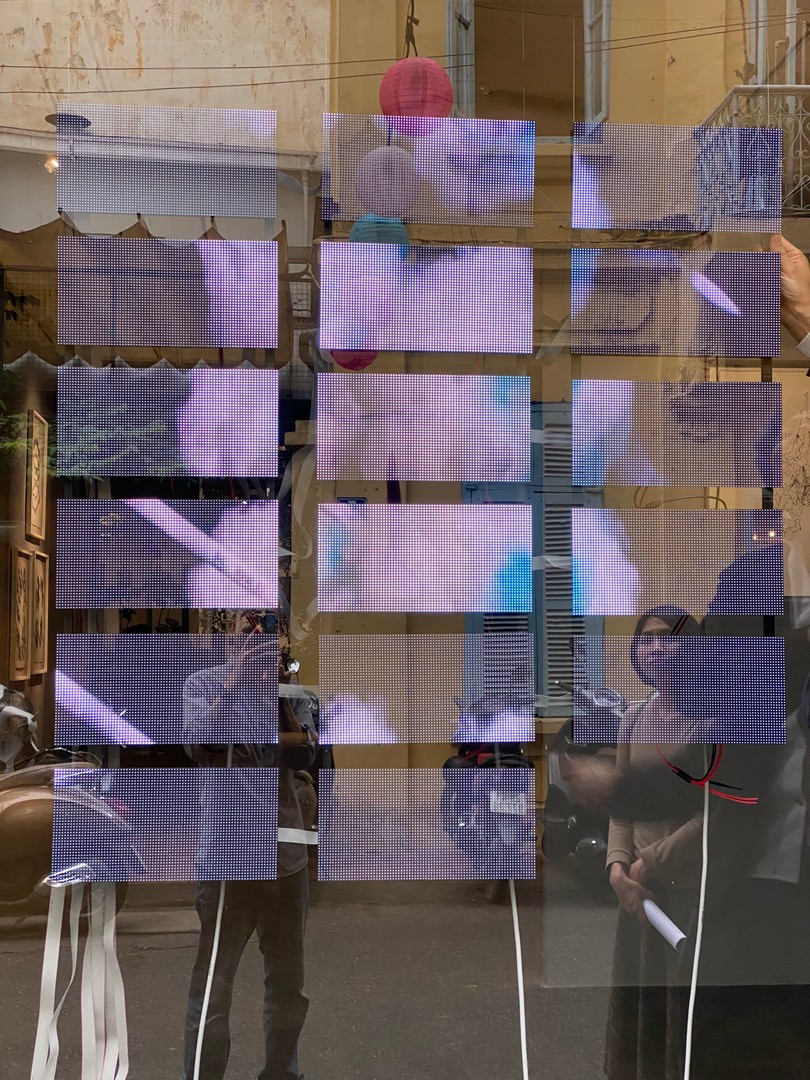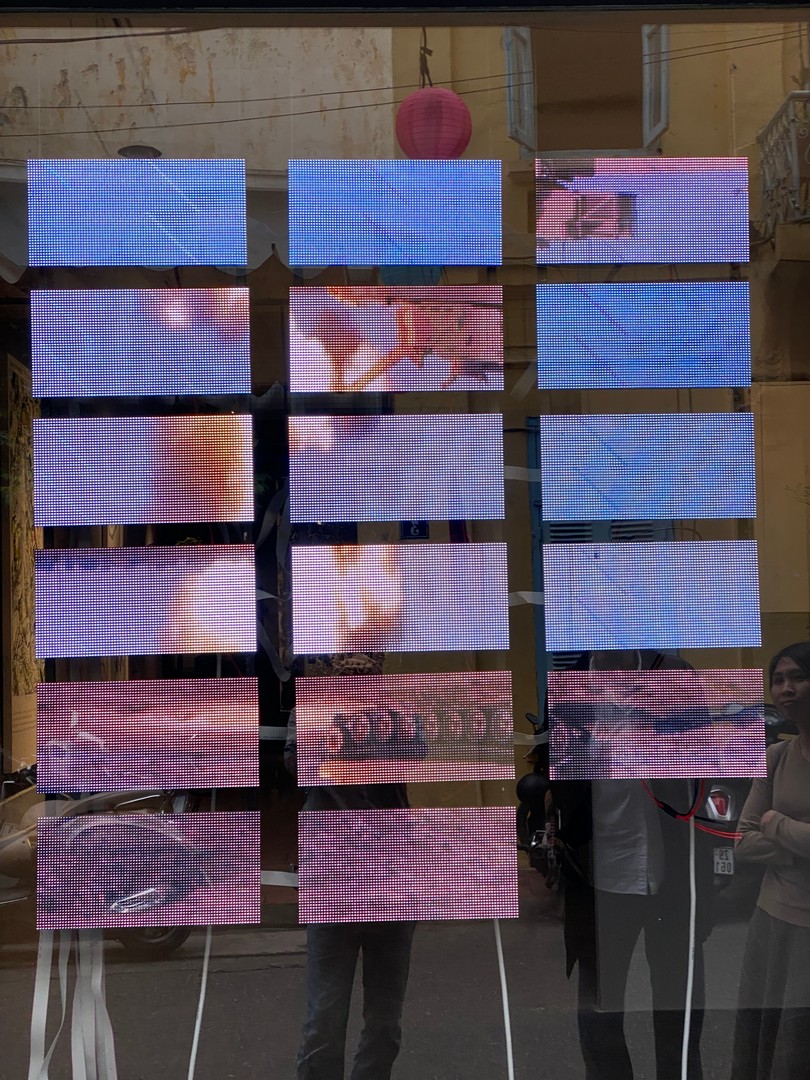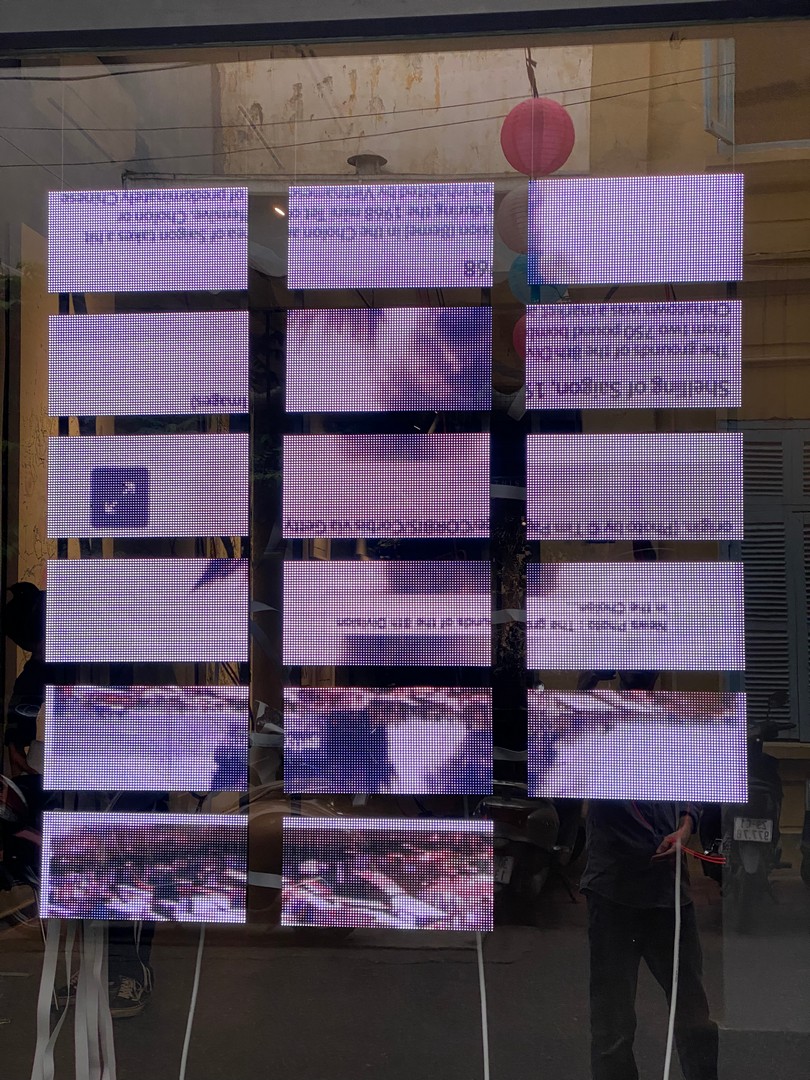Featuring twenty mixed-media works on canvas and paper, Neo-Romanticism marked the return of Lê Quý Tông to Manzi after over seven years since his solo show titled True Blue (2015) which saw the beginning of his on-going experiment with a ‘input hybrid’ of painting, decorated pattern and found imagery. Along with the participation of a new technique - screen printing in the artist’s practice, this comeback also sees a dramatic change in the color palettes: neither limited to monochromatic color schemes nor restrained in the deep, somber shades as in his previous series True Blue and True Gold. Conversely, Neo-Romanticism witnesses a bloom in a wide variety of colors, including both bold and subtle, fiery and dusky hues. Yet, what to expect beyond the new method and palette which got an air of Pop Art Style? Further than just the outer expansion in visual accomplishment, can we find any pole vaulting in the inner of this artist’s latest expedition?
The first bar to jump over probably is the starting point of all Tông’s paintings - the photographic documentation. These images sourced from historical archives and mass media are easily accessible by an online image search engine. Rather than to intentionally select an image that would anchor his own composition and navigate the viewer’s perception, Lê Quý Tông randomly singles out a photo that he found intriguing as an input element; its original context is of very little significance. It varied from a reliable evidence of a momentous event influenced the course of history to a fragment of manipulative media & information / a dishonest journalistic recording of a person or a conflict (in the past or in the present). The visual source can also be recognizable imagery of popular culture (such as Marvel Comics an Disney characters) or may be borrowed from some religious illustrative motifs and even some propaganda posters. Taken out of their original context, these visual elements once have been appropriated, reassembled together into something beyond space and time which ultimately can erase all boundaries and opposite sides of the initial narratives - no longer exists the enemy, invader & comrade, patriot; justice of war & injustice in war, righteousness & moral weight are all nonsense in the disturbed situation of Neo-Romanticism.
Source: Manzi

